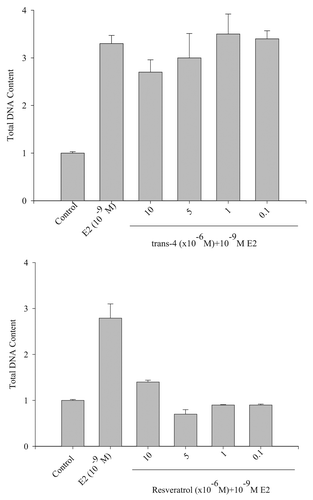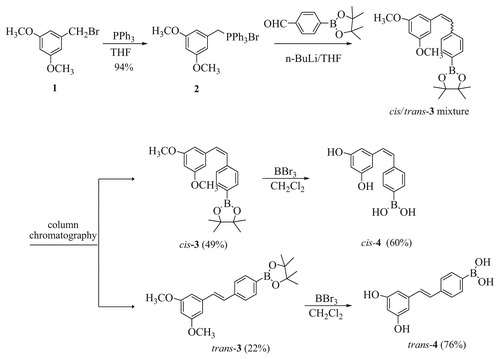Figures & data
Figure 1. (A) Structures of known boronic acid compounds and (B) Design of boronic acid analogs of resveratrol: cis-4 and trans-4.
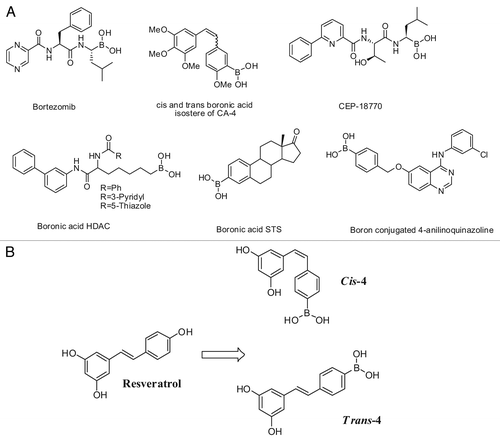
Table 1. Effects of cis-4, trans-4 or RSV on growth inhibition of the ER+, estrogen-dependent human breast cancer MCF-7 cell line
Table 2. Effects of trans-4 or paclitaxel on the growth inhibition of multi-drug resistant breast cancer cell lines
Figure 3. A. Effect of compounds on cell cycle distribution in MCF-7 breast cancer cell lines. Asynchronous MCF-7 cells were treated with 30 µM of cis-4, trans-4, or vehicle control for different time intervals (16, 24, and 48 h), fixed in 70% ethanol and DNA content was determined by labeling with PI followed by flow cytometric analysis. B. Fraction of compound treated cells with trans-4 in G1 relative to control-treated cells. Results are represented as a mean of triplicate samples.

Figure 4. Irreversible of trans-4 on MCF-7 breast cancer cell growth inhibition under different conditions. After 24 h post incubation, cells were treated with increasing concentrations of trans-4 (1–100 µM) under three different conditions. In the first method, cells were exposed for 48 h to trans-4. In the second method cells were exposed to trans-4 for 48 h, washed with serum free media and cultured for additional 48 h without compound. In the third method, cells were treated every 24 h to fresh media with trans-4 for 72 h. Cells were harvested at the indicated times and analyze for cell growth inhibition by the WST-1 method. Values represent the mean ± SD of triplicate wells. The experiment was repeated thrice with identical results.
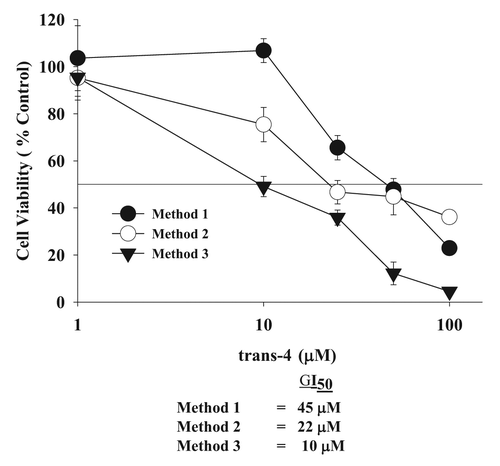
Figure 5. Effect of trans-4 on the expression of G1-S transition regulatory proteins. MCF-7 cells were treated with the indicated concentrations of trans-4 for 24 and 48 h. Cell lysates were subjected to immunoblotting to detect cyclin D1, cdk4, cyclin E, cdk2 and pRb proteins by their specific antibodies. Human -actin was used as a loading control. Twenty-micrograms of lysate was used for each experimental condition.
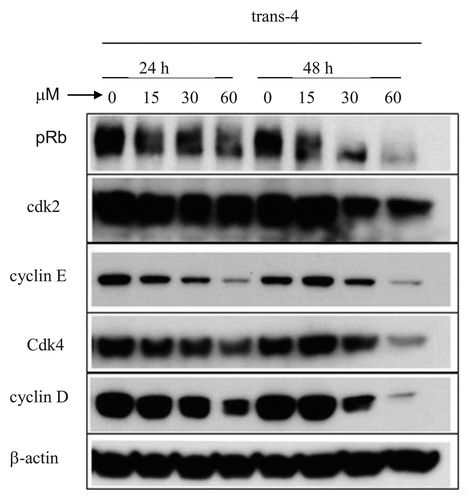
Figure 6. western blot analysis of PARP cleavage. (A) MCF7 cells were treated with trans-4 for 48 and 72 h and equal amounts of cell lysate were resolved using SDS-PAGE and analyzed by immunoblot using anti-PARP antibody. The blots were re-probed with anti -actin antibody to confirm equal protein loading. (B) Comparison of density of cleaved PARP band (normalized with actin) of trans-4 and resveratrol were determined by densitometry NIH image analysis.

Figure 7. Effect of trans-4 or RSV on E2-mediated MCF-7 cell growth. MCF-7 cells were treated with estradiol (E2, 10-9M) alone or in combination with the indicated concentrations of trans-4 or RSV. After 5 d incubation, the DNA content of the treated cells was measured using a DNA fluorescence kit (BioRad # 170–2480). Results are shown as the mean of triplicate samples ± SD. Repeated the experiment in twice with identical results.
